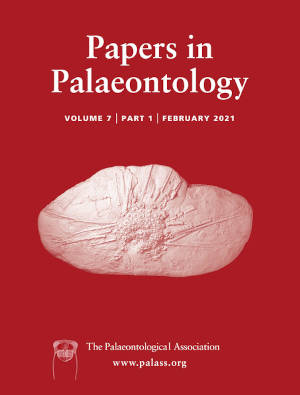Reg. Charity No. 1168330

The trilobite order Harpetida has long been easily recognized but many unanswered evolutionary questions about the group remain. This work explores the phylogenetic relationships within Harpetida and studies the harpetid response to the Late Ordovician mass extinction to better understand the relationship between extinction events and disparity. A discrete morphological character matrix was assembled from published descriptions and refined through first-hand observations. This matrix is the first attempt of its kind to characterize the overall morphology of Harpetida, rather than focusing on individual harpetid genera. Phylogenetic analyses under both maximum parsimony and Bayesian inference optimality criteria retrieve tree topologies that support harpetid monophyly but throw doubt onto previous hypotheses of the internal relationships of the order. Harpetid disparity proves remarkably stable over time. A modest peak in the Ordovician is followed by a slow decline throughout the Silurian and Devonian. After the Ordovician period, harpetids demonstrate little or no ability to colonize new areas of morphospace. This may represent a fundamental failure to recover, in which the lasting impacts of Late Ordovician mass extinction continue to suppress morphological innovation. These findings demonstrate that mass extinction events may have complex impacts that play out over many millions of years.